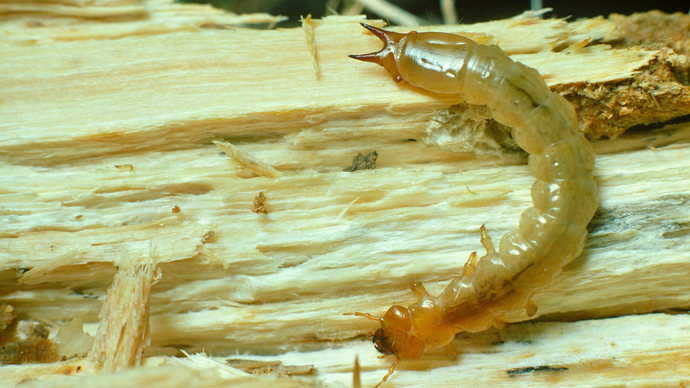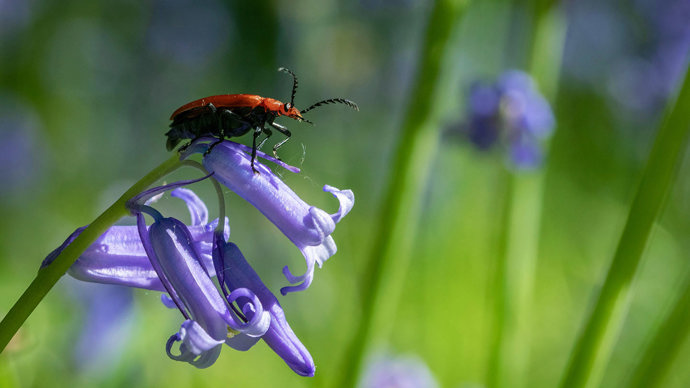Common name(s): red-headed cardinal beetle
Scientific name: Pyrochroa serraticornis
Family: Pyrochroidae
Habitat: woodland, hedgerows, parks and gardens
Predators: birds
Origin: native
A flame-coloured sun worshiper, the red-headed cardinal basks in the summer sun in woods and hedgerows, and nestles under loose bark on broadleaved trees.
Common name(s): red-headed cardinal beetle
Scientific name: Pyrochroa serraticornis
Family: Pyrochroidae
Habitat: woodland, hedgerows, parks and gardens
Predators: birds
Origin: native
Adults: the red-headed cardinal beetle is a mid-sized beetle of woodland edges. It has a bright red head and wing case, with black legs and antennae.
Larvae: are yellow brown with darker heads and live under loose bark.
Not to be confused with: other species of cardinal beetle like the black-headed cardinal and the scarce cardinal. Both species have black heads instead of red. Lily beetles also look similar, but they are much rounder and have dimpled wing cases.
Red-headed cardinal beetles are carnivorous at all stages of their lives. Adults feed on smaller insects while larvae eat the larvae of other insects.

Credit: Martin Dohm
Females lay fertilised eggs under the bark of dead wood. The hatched larvae live under the bark of both dead and living trees, feeding on smaller larvae until they are ready to pupate. They also pupate in trees, and are probably not too picky about which species of tree – as long as there’s loose bark for it to get under.
The red-headed cardinal beetle lives around woods and trees, with adults emerging from May to July. It is common and widespread in England and Wales.
The rarer black-headed cardinal beetle not only has a black head instead of red, it also has a darker red wing case.

Credit: Andi Edwards / Alamy Stock Photo
Look out for red-headed cardinal beetles basking on leaves and flowers during the day in late spring and early summer. Their bright red heads and bodies are the best way to identify them.
A loss of habitat is the main threat to the red-headed cardinal beetle.
You can support it, and other invertebrate species, by planting trees and letting part of your garden grow wild.